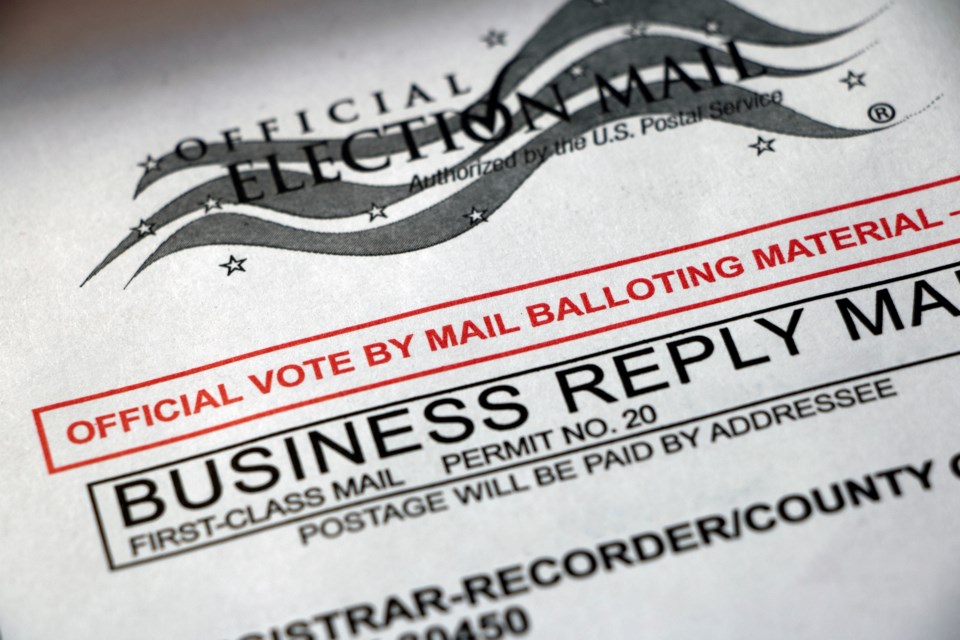Editor’s note: This story was originally published by The Colorado Sun and was shared via AP StoryShare.
***
Perhaps your signature is picture-perfect cursive letters. Or maybe it’s a messy scrawl.
Either way, you may be wondering: How do Colorado election officials verify that the signature on your ballot envelope is actually yours?
Colorado election officials began mailing ballots to registered active voters Friday and voters should receive them in the next week.
When completing mail ballots, one of the most often-asked questions involves the required signature on the envelope. It’s what county election officials use to determine whether it counts or gets rejected. To get a sense of how it works, we talked to some county clerks and the Secretary of State’s Office about the process for signature verification.
In short: The signatures required on the outside of the envelope used to return your mail ballot confirm that the right voter filled out the ballot. They’re matched most often by a bipartisan team of two election judges, and if there’s a problem, the voter has a chance to fix it.
In Colorado, few ballots — less than 1% — are rejected because of signature discrepancies. According to the Secretary of State’s Office, only about 16,000 in the 2016 general election and about 13,000 in the November 2018 contest.
But a Colorado Public Radio investigation found that those whose ballots are rejected are often young voters or voters in counties with higher numbers of non-white voters.
What signature are they using to compare?
Typically, a voter’s signature on a ballot envelope is compared against one the most recent signature state has on file in its database.
If you voted in the June 30 primary, that’s the signature that will be used for comparison. If you recently moved to Colorado and registered to vote when getting a driver’s license, that’s the signature that will be used.
The state stores signatures on official documents that are used for review by local election officials, but they aren’t public, said Betsy Hart, a spokeswoman for Secretary of State Jena Griswold.
“For instance, our elections director, who lives in Denver, tells me he has 24 signatures in his file,” Hart wrote in an email.
Who does the signature comparison and how do they do it?
All counties use a team of two election judges to determine whether a signature should be rejected.
These judges are interviewed and selected from lists provided by the political parties, so a team of one Democrat and one Republican examine the signatures and both must agree in order to reject a ballot.
The Secretary of State’s Office has a 20-page manual on signature verification with illustrations on what to look for. The state and individual counties train election judges on verification before they start work.
A recent New York Times story put Jefferson County’s elections director to the test when it came to signatures, and Cody Swanson was able to identify the fake and real signatures correctly. The judges are taught to look for particular features that may indicate a questionable signature.
Some large counties in Colorado actually use special software connected to their ballot processing machines to make an initial comparison and acceptance of signatures on ballot envelopes. Arapahoe County is among them.
“It has a camera, that’s what captures the image of the signature,” said Peg Perl, the county’s elections director. “It only accepts (ballot signatures), it never rejects (them). Anything that doesn’t meet that high level of confidence goes to humans.”
And the machine is only used when processing early mail-in ballots, Perl said. Election judges will do all the signature matching Nov. 2 and Election Day, Nov. 3.
Perl said the county has doubled the number of signature verification judges from 30 to 60 this year, with two shifts of workers to allow for social distancing during the coronavirus pandemic.
Delta County also doubled its team of election judges that check signatures to four for the November election. All signatures in the small Western Slope county are reviewed only by the election judges, not by machines.
Deputy Clerk and Elections Director Rene Loy-Maas said less than 1% of ballots end up having signatures questioned. Loy-Maas noted that signature verification isn’t easy: “It is a very intensive manual labor.”
What if a voter’s signature doesn’t match?
In the rare instance that a ballot is rejected because of an unverified signature, there’s still a chance for voters to correct the issue and get their ballots counted.
Elections officials will send a letter by mail, as well as email or text if that information is included in your voter registration, letting voters know that their signature was rejected and offering them an attempt to “cure” the problem.
This year, voters will be able to cure their signatures directly through their phones under a program announced this week. If you get a notice that your signature has been rejected, you may text the word “Colorado” to 2VOTE (28638).
Then follow these steps:
• Click on the link you receive in reply.
• Enter the voter ID number on the notice you receive.
• Affirm you returned your ballot.
• Sign an affidavit with your finger.
• Take a photo of your ID and submit it.
But voters also may go to a voting center and present an ID to correct their signature issues.
“Arapahoe has been using the mobile curing for a while now,” Perl said. “Voters really like it.”
If you don’t cure your ballot? It doesn’t count.
“We keep the physical ballot on the shelf” in Arapahoe County, Perl said. “We don’t open the envelope. If they never send back that cure letter, we never open that envelope. It just goes to election records.”
***
This story was produced with support from a grant from the American Press Institute.



